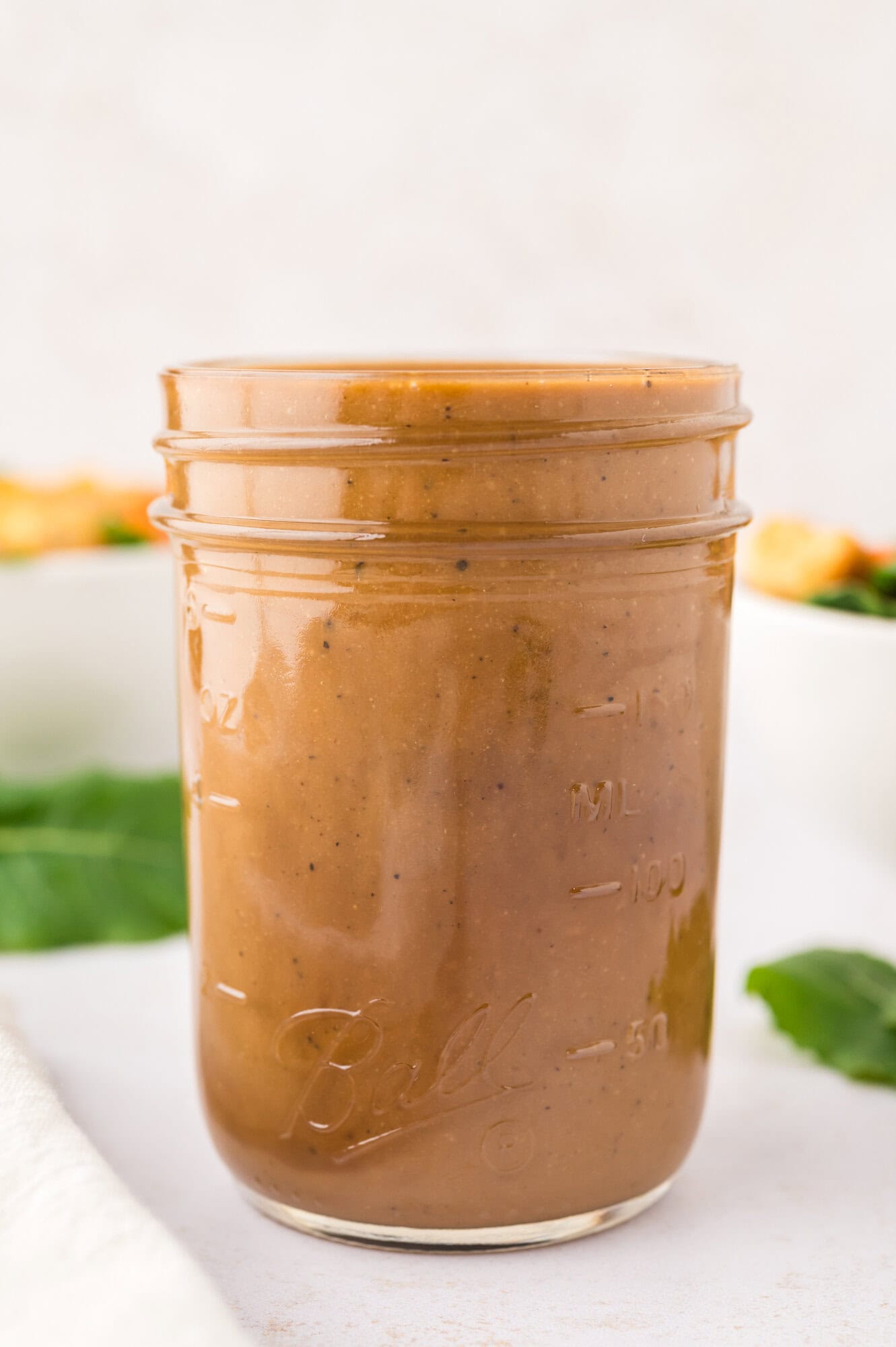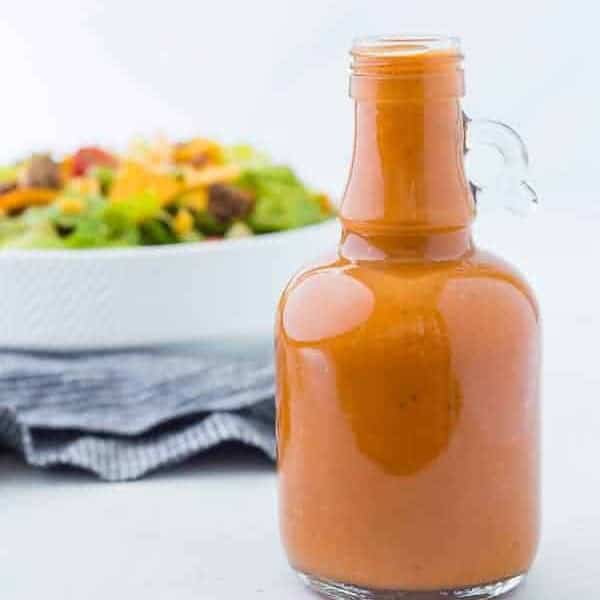How long it takes: 5 minutes Equipment you’ll need: a small jar, or bowl and whisk Servings: 6 (makes ¾ cup) While some salad dressings are decidedly either sweet or savory, balsamic vinaigrette straddles both, with a subtle sweetness that’s not cloying, and savory flavor from the garlic. There’s also a little zip from the Dijon mustard (which also helps emulsify the vinaigrette) and, of course, tanginess from the vinegar—but not quite as much as other vinegars since balsamic tends to be pretty sweet. Everything comes together with perfect balance! If you love balsamic vinegar, be sure to try my balsamic chicken marinade and homemade balsamic reduction (use it as a glaze or syrup).
Reasons to Love This Balsamic Vinaigrette
Quick and easy. With just a handful of ingredients and a few minutes of prep, you can whip up a homemade balsamic vinaigrette. You don’t have to crowd your fridge with a selection of bottled salad dressings. Simply make your own as you need it. Better than store-bought. Homemade vinaigrettes are fresher-tasting and more budget-friendly than store-bought dressing, and since you make small batches, there’s less chance you’ll end up throwing half of it out. Customizable. This vinaigrette recipe is incredibly adaptable. Want it a little sweeter? Add more honey. Prefer a bolder flavor? Increase the mustard or garlic. Tweak it to suit your tastes! A multipurpose dressing. Balsamic vinaigrette isn’t just for salads! It makes a fantastic marinade for grilled vegetables or chicken. Try my balsamic roasted vegetables, honey balsamic chicken thighs, and sheet pan honey balsamic chicken and vegetables. Goes with so many salads. I don’t think there’s any dressing more versatile than balsamic vinaigrette!
Ingredient Notes
Olive Oil: This is the perfect occasion to use the fancy, fruity olive oil that’s been sitting in your pantry. Good olive oil equals good vinaigrette. Balsamic Vinegar: When it comes to balsamic vinegar, you get what you pay for. Inexpensive varieties tend to be watery and one-note while aged balsamic is thick, syrupy, and balanced in flavor. This is another reason homemade balsamic vinaigrette tastes better; I guarantee that the store-bought dressing is made with inferior vinegar (and probably not much of it!). Honey: You can use sugar or another sweetener instead but I like honey because it also adds another layer of flavor. Dijon Mustard: Peppy Dijon adds a sharp, pungent note to balsamic vinaigrette. You can leave it out if you’re not a fan. I usually use the smooth Dijon but grainy mustard works well, too. Garlic: The acid in the dressing will mellow the bite of the raw garlic. Salt and Pepper: I like a lot of coarsely ground black pepper in this vinaigrette.
How to make Balsamic Vinaigrette
Combine ingredients. Measure out the olive oil, balsamic vinegar, honey, mustard, garlic, salt and pepper into a small bowl or a jar with a tight-fitting lid. If you’re using a blender, you can put the ingredients in the blender jar. Option #1: Mix by hand. Whisk or shake well until the dressing is emulsified (the vinegar and oil are blended together). If you refer to the photos, the vinaigrette will be a darker color. Option #2: Mix with blender. A small blender works great. Blend on high speed briefly until dressing is light colored and emulsified. The dressing will appear much lighter in color and is a bit thicker than the hand-shaken version but the taste will be the same. Season to taste. Dip a spoon or fork into the dressing and sample a little bit. If you think it needs it, add a little extra honey, or salt and pepper. You can use the dressing immediately or store to use later. Shake well before serving.
Tips for Making Balsamic Vinaigrette
Adjust the garlic to your liking. If you prefer a more mild garlic flavor, use a half teaspoon of garlic powder instead of freshly minced garlic. You may also omit the garlic completely if you’re not a fan. Always taste and adjust. The key to a perfect vinaigrette is tasting and adjusting to your preference. A little extra salt, pepper, or honey can make all the difference. Let chilled vinaigrette sit at room temperature before using. Sometimes the olive oil will turn solid in the fridge if you’re storing the dressing. Don’t worry, it hasn’t gone bad! Just leave the vinaigrette out at room temperature for 15 to 20 minutes before using. Once the olive oil liquifies, shake well and use. If it’s in a microwave-safe container, you can microwave it for 10 seconds or so.
Flavor Variations
Garlic Herb Vinaigrette: Mix in a teaspoon of dried Italian herbs. Maple Balsamic Vinaigrette: Replace the honey with pure maple syrup. Shallot Vinaigrette: Instead of garlic, add finely minced shallot. Salad Extras: Try homemade croutons or air fryer croutons, savory granola (nut-free!), toasted almonds, pepitas, or crispy air fryer chickpeas.
Storage Suggestions
Store balsamic vinaigrette in the refrigerator for up to a week. Shake or whisk before using to re-emulsify. If the dressing solidifies, simply bring it to room temperature and shake it well before use.





















